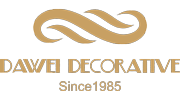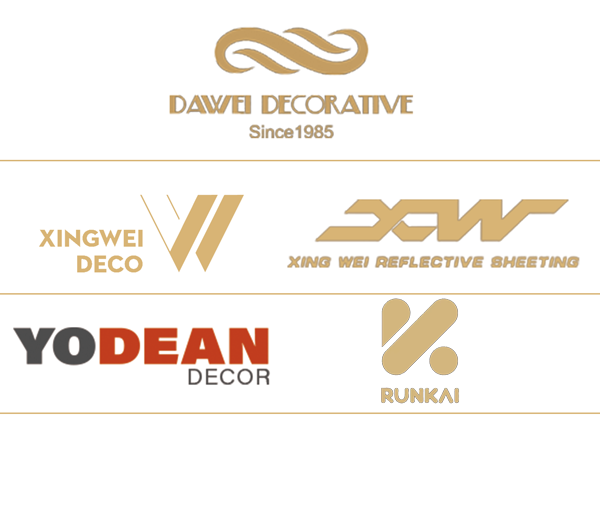Panel furniture is comprised of glued-together elements, usually made from a variety of wood breeds. The lamellas of these pieces can be made from any shade of wood, from wenge to maple. Maple is one of the most popular wood breeds for this type of furniture. Other common wood breeds used for panel furniture include pine, which has yellow-toned inner layers and darkens to a reddish or brown shade with age. Wenge is a popular wood shade. Cherry wood is another popular choice, with intricate patterns and reddish or green blotches.
Formica(r) Magnetic Laminates
Magnetic Formica(r) Laminates for panel furniture provide a strong magnetic effect, making them ideal for display and communication. Suitable for indoor and outdoor applications, the durable material can be written on using special board markers or chalk. In addition to enhancing the aesthetics of a room, this material is also hygienic and durable. So whether you’re building a school, a commercial building, or your own home, you’ll find a product suitable for your needs.
The company’s original laminate, Formica, was invented by Daniel J. O’Conor and Herbert A. Faber at Westinghouse in 1913 as a replacement for mica in electrical applications. It’s a woven fabric coated with Bakelite resin that is slit lengthwise and cured in a press. It is easy to clean and maintain, and is scratch and heat resistant.
The company is 100% Chinese. Its product range includes Formica Prima and Alabaster Decorative Laminates for panel furniture. Both types of Formica are durable and look great. Formica Alabaster Oak General Purpose Laminate Sheets are 1220 x 2440mm and 1mm thick. The wood grain of Alabaster Oak is derived from salvaged Elm beamwood.
ECOBEN WAVE(tm)
Ecoben Wave is a composite panel made from recycled paper fibre and corrugated layers. This material is laminated on both sides with an eco-resin and is available in a variety of finishes, including satin and clear. This product is particularly suitable for interior architecture applications, such as dividing walls and bathroom partitions. Its eco-friendly and sustainable properties make it an excellent choice for panel furniture.
Bencore Lightben, which is the composite material used in the ecoben wave panel furniture, is 100% recycled. Its lightweight structure makes it possible to create curved shapes and glossy edges. Its materials are 100% recyclable and have passed the Environmental Product Declaration (EPD) and Life Cycle Assessment. This makes Ecoben Wave panel furniture a great choice for interior design projects, office furniture, and more. Designed for a wide range of applications, Ecoben Wave has many benefits, and will make your interior look more stylish and environmentally friendly than ever.
Bencore is an alveolar structure made of aluminum with hexagonal cells covered with plastic. The result is a transparent effect. It is lightweight and easy to install. Its patented composition panel is available in a variety of colours and finishes. The panels can be decorated with different accessories and are available in various shapes and sizes. The ECOBEN WAVE panel furniture can be customized to meet any design requirement.
Formica(r)
A work station created by the Formica Group is made of ColorCore(r) laminate and supported by a pinewood slat structure. The design features routered and layered finishes, making it a striking piece of furniture. Its simplicity impressed the panel’s judges. The company also created a new line of architectural paneling, VIVIX(r) architectural panels. Both products are environmentally friendly and FSC-certified.
In 1956, the Formica Corporation was purchased by the American Cyanamid corporation. Cyanamid relied on Formica’s brand name to generate income. Vincent Langone joined the company in 1967 and eventually became president. Despite the initial missteps, Formica continues to make quality panel furniture. Today, the company produces a wide range of panel furniture, including kitchen counter tops and dinettes. This enduring appeal has helped the brand become a household staple.
The Formica Brand Laminate product line offers a variety of looks and finishes. From solids to graphic patterns, this product is durable and beautiful. No matter what your design challenge, Formica has the perfect solution. A wide range of color options, finishes and textures make it the perfect choice for home decor. A Formica brand laminate product is an excellent choice for panel furniture. There are many benefits of using Formica Panel Furniture.
In the design category, the Formica Group announced its winner in the Formica Formations 2020 competition. The winning design was created by Miriam Anton Ganzalez and INSENIA Design School in Madrid. The winning design is a compact work station that combines function with style. This innovative work station gives users plenty of storage space and allows them to separate their work and leisure time.
Maple-based furniture
There are various qualities of maple available. These are classified by field of application. In general, maple is available in A/B visual quality. Visual quality A is nearly knot-free, with the exception of small knots which are usually no bigger than 4 millimetres. Visual quality B is slightly rougher in appearance. Beech heartwood differs little from sapwood. Therefore, these woods are also widely used for panel furniture.
Moreover, maple is also known for its sturdiness. The wood of this species is typically white and turns yellow when exposed to sunlight. For this reason, it is important to treat maple boards with a UV-resistant lacquer to keep them looking their best. This type of wood has few knots, which is why maple-based panel furniture is very beautiful. Aside from this, maple has a straight grain and even texture.
Birch, on the other hand, has a lighter appearance than maple, which can cause blotchiness if stained. In addition, birch wood is less noticeable when scratched. Both types are durable and good for furniture, but maple is a more costly wood. Birch wood is often used for kitchen cabinets and is often used as a substitute for maple, but it’s less expensive. You’ll have to choose which type you want, though.
MDF
MDF panel furniture is an excellent choice for anyone looking for a durable and affordable wood product. Made from wood fibers, MDF panels are easy to shape and paint, and are an economical alternative to traditional wood products. Because MDF has low moisture absorption, these items are often used in internal applications. They are also available in raw form. Decorative coatings are available for additional aesthetic appeal. Below are the benefits of MDF furniture.
MDF is made from a composite of wood and phenolic resins. It contains zinc borate, and is naturally water-repellent. Particle-boards, on the other hand, contain urea-formaldehyde, and are not as durable as MDF. However, MDF is more durable, and it can last for 10 years. Particle-boards can only last up to 25 years.
MDF is a dry-process fibre board, with the majority of its components consisting of wood fibre. This composite is generally made from urea-formaldehyde resin glue and 82% wood fibre. The remaining materials are water and paraffin wax. As with most composite materials, MDF is a low-cost, energy-efficient alternative. It is also environmentally friendly and affordable. MDF does not contain knots or kinks, and it’s easy to paint or varnish.
MDF panel furniture can emit a small amount of formaldehyde when new. To avoid this problem, store your MDF furniture outside until it stops smelling or open the doors to let the air flow. In addition, higher temperatures and humidity can increase off-gassing. Certain sealants can help block the toxic gasses from coming out of the MDF panel. If you want to cut or sand your MDF panel furniture, it’s best to apply sealants to the exposed edges.
Particleboard
Unlike solid wood furniture, particleboard panels are easy to move. Particleboard panel furniture is also light in weight, but its strength is not nearly as great as that of plywood or other wood products. Particleboard furniture is susceptible to moisture damage, and should be treated with proper water proofing and paint. To extend the life of particleboard furniture, it should be maintained in good condition, and should be moved or stored in a dry place only.
Particleboard can be difficult to glue because of the moisture and wax used in its manufacturing process. However, using PUR adhesives is the safest way to adhere the materials. However, some manufacturers use hot melt adhesives to edgeband particleboard panel furniture. Gluing particleboard furniture can be a difficult process, so be sure to follow manufacturer instructions carefully. Otherwise, it might spring back or splinter. You can also try sanding the particleboard pieces before gluing them together.
In North America, particleboard manufacturers are required to use materials that meet certain emissions standards. These standards set standards for formaldehyde emissions and have been voluntarily developed by manufacturers. EPA TSCA Title VI requires particleboard products to meet a minimum formaldehyde emission level of 0.09 ppm. In addition to ANSI Standards, EPA has also established a process for regulating particleboard panel furniture and wood-based components.
In a summary, the panel furniture is made of artificial board and lamination furniture paper. For the based board, the based board cover particleboard, MDF, and others. For the furniture paper, there are finish foil, melamine paper, etc lamination paper to decorate and protect the wood-like surface. Therefore, the panel furniture meets the all demands of young people in various designs, it makes all designs possible.




Thanks for your blog, nice to read. Do not stop.